How Do Animals Adapt To Not Being Able To See
Creature adaptation
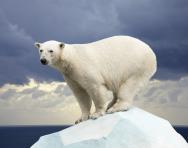
What is animal adaptation?
When the weather gets cold, you lot put on a coat to go along warm. If it's hot, you lot wear a hat or fan yourself to cool down. Those are both ways of adapting to your habitat. While animals don't have wearing apparel, they practice have built-in means of keeping the right temperature and protecting themselves in the habitat they live in.
Over many years and generations, animals have changed in order to survive and thrive in the environments they alive in. This procedure is chosen accommodation.
At that place are a number of ways that animals adapt – these can exist inside our exterior their bodies, in means that they act, or even in means that they work with other animals in their habitat. If you suddenly took an animal exterior its habitat into something completely unlike, all those adaptations wouldn't work anymore, and it wouldn't exist skilful for the animal. It's the same as if yous dressed in your warmest glaze and woolly lid and scarf in the heart of August – yous'd exist much besides hot!
Every habitat on our planet is home to different animals and plants who are uniquely adapted to alive there.
Top 10 facts
- In order to survive, animals need to make sure they have food, water, oxygen, shelter, and a identify to raise their offspring.
- Animal adaptation describes all the ways that animals know how to survive in their habitat.
- Animal adaptation doesn't happen immediately – it'due south taken many years of new generations of animals being born with characteristics that take suited their habitat amend.
- The same kind of animal, like an owl, can accept many different species that are each adapted to different habitats. Owls live all over the world in many different climates.
- Animals also arrange to their habitat through having special built-in things almost themselves that protect themselves from predators. This can be toxicant that forms naturally on their skin, or merely knowing the best places to hide when it'south time for a nap.
- Camouflage is one manner animals have adapted to their environment – they've started looking similar information technology! For case, animals that live in the Arctic often have white fur, which matches the colour of snow.
- Animals have had to adapt to the climate they live in, too. If it'due south always very cold, they sometimes have an extra layer of fatty to assistance keep them warm (like polar bears do).
- If a habitat gets too cold during the wintertime, some animals have adapted by just leaving it! They come up dorsum when it warms upwards once again. This is called migration.
- Animals tin also adapt past working together with other animals – this is called symbiosis. Each beast has something that the other needs, and they help each other survive. It's skillful teamwork!
- Plants conform to their environment, as well. For instance, cacti in the desert have adjusted by not needing much h2o to survive.


Boost Your Kid'southward Learning Today!
- Start your child on a tailored learning plan
- English & maths resource delivered each week to your dashboard
- Keep your kid's learning on track
Did you know?
An fauna's habitat is its abode. It's where it can find all the things information technology needs to survive:
- food – this can be plants, or other animals and insects, or all of those things
- h2o – this tin can exist from a lake or river, or even the side of a plant
- oxygen – air to exhale
- shelter – a identify to stay dry, to sleep, and to stay safe from predators
- a identify to raise their offspring (babies) – a place where young animals can grow up safely and with all of the things they need
The reason why animals are happiest when they're living in their natural habitat is because they've adjusted to exist comfy there. They're used to all of the funny things most it, and it's their favourite place on Earth.
Adaptation takes a very long fourth dimension – it's function of how animals have evolved, and how unlike species of animals have come to be.
Animals are often the aforementioned colour as their habitat – and some tin fifty-fifty modify their color to match where they're sitting! This is called camouflage. For example, lots of animals in the rainforest are green – this is because the rainforest is more often than not green.
Animals accept camouflage so they can hide from annihilation trying to consume them for dinner, and also then they tin hunt for food and catch their dinner past surprise. Unlike kinds of camouflage are:
- Blending into the background – having patterns on skin that await like the things around them; for instance, turtle shells tin await similar rocks when they tuck their head and legs inside.
- Mimicking the habitat – looking like a found that belongs in the habitat; for example, stick insects really await like sticks, which ways their predators walk away thinking, 'I don't want to consume that stick…'
In habitats that get very cold, animals suit by hibernating (sleeping for up to a few months at a time), or by migrating. Migrating is when they go out the habitat for another one that's a better temperature for them, similar when birds wing south during the winter. They'll get to a warm spot, but as that gets likewise hot they'll fly back due north where it'south cooler, but not as cold as when they left. That's why nosotros come across all the birds come back in the spring!
Expect through the gallery below and see if y'all can spot the following:
- A dromedary camel with its very long eyelashes, and nostrils that tin open and close
- The fennec fox'southward long ears
- A jackrabbit's long ears and powerful hind legs that assist it move very quickly
- A raccoon
- This forest frog'due south skin looks a lot like the co-operative it's sitting on
- A porcupine and its quills
- A giraffe reaching leaves way upward in the tree
- Black circles effectually a meerkat'southward eyes
- A lioness's sandy-coloured fur and long, crude tongue
- A stingray that'due south buried itself in the sea flooring
- Clownfish in anemone tentacles
- A sea urchin'southward spiky crush
- Emperor penguins huddling together to go along warm
- You tin can barely encounter the snowy owl in the snow… and behind all its feathers!
- A tapir swimming with its long nose held up out of the water
Gallery
About
Adaptations can be lots of different things, just they usually fall into one of these groups:
- Structural – things about animal inner and outer bodies that have helped them accommodate to their environment, such equally a giraffe's tall neck that means it can consume leaves on tall trees.
- Physiological – special means that animals' bodies work to help them survive in whatever condition they're in, such every bit camels in the desert conserving h2o and being able to go days without drinking.
- Behavioural – things that animals exercise that make life a lot easier in their habitat, such equally meerkats in living in the ground so they stay condom from predators
Means animals adapt in desert habitats:
- A dromedary camel can drink 30 gallons of water in 10 minutes. It also stores fatty in its hump for extra free energy (not water!), and can open and close its nostrils so it doesn't breathe in sand when there's a windstorm. Camels also have long eyelashes that bat sand abroad.
- The fennec flim-flam has very long ears that help it keep cool by spreading out body heat. Information technology also has special sorts of kidneys that conserve h2o, so the flim-flam doesn't need to drink very often. They also have thick fur on the bottom of their anxiety so they tin walk over the hot desert ground.
- Jackrabbits are nocturnal animals, because it'due south cooler in the evening and easier to hibernate from predators. They more often than not slumber during the day, and they are herbivores. They eat plants that have a lot of water in them, so they don't need to worry almost finding h2o anywhere else in the dry desert. Jackrabbits have big ears, like the fennec fox. If they're trying to get away from a predator, they move very quickly in a zigzag design to try to become away.
Ways animals accommodate in forest and woodland habitats:
- Raccoons are nocturnal animals, and they have very good eyesight which helps them see at night. They are omnivorous and eat everything the wood has to offering – from nuts and berries on copse to fish in streams. They store upward fat so they tin slumber for a month or so at a time in the colder winter months, and they tin even share a winter den with other animals similar opossums and muskrats so everyone stays warm.
- Wood frogs have camouflaged skin so they blend into the background very well. They have a layer of mucous on their skin and so they can slip away from predators. They can also hibernate in the wintertime when their habitat gets too cold for comfort.
- Porcupines are basically rodents (similar rats) but they accept a really amazing way to defend themselves. They've got almost 30,000 precipitous quills on their bodies that they can raise up to ward off a predator, but if the predator gets too close, the quills volition stick straight onto its face. Ouch! Porcupines also similar eating bark and twigs, so they've got abrupt claws that help them climb upwards trees ameliorate.
Ways animals adapt in grassland habitats:
- Grasslands sometimes go a long time without water, but giraffes have adapted past not needing to drinkable h2o for weeks at a time. They can go past from the water in the leaves they eat, which they tin can reach because of their super-long necks. Because giraffes are so tall, they can also see for a long way around them, which is helpful in the grassland where there aren't many places to hide from predators.
- Meerkats live in areas that are almost like deserts – hot, dry and not much vegetation. They have dark rings effectually their eyes to stop glare from the sun, so they tin see well fifty-fifty when it's actually vivid outside. Because at that place aren't many places to hibernate from predators, meerkats alive in underground tunnels that give them a quick escape when they're on the run. Meerkats live in large colonies where they share out jobs similar minding babies, keeping watch for whatever danger and hunting for food.
- Even though lions are 'the kings', they have had to adapt to their habitat simply like all the other animals have. Panthera leo'south fur is the perfect sandy colour to blend into the African savannah, and then they can sneak up on prey pretty hands. Lions talk to each other through their loud roar – it likewise sounds scary so any other predators know to steer clear. Lions mostly sleep in the mean solar day to stay cool, and they hunt at night. When they practice take hold of prey, they use their long claws every bit weapons and then eat their fresh repast past licking off skin and meat with their crude tongue.
Ways animals adjust in marine habitats:
- Stingrays have flat bodies and swim along the sea floor. Their optics are on the meridian of their body, and their mouth is on the bottom – so, they can see around them as they're swimming along, and accept in whatsoever food along the ocean floor. Since they're already at the bottom of the sea, they can quickly bury themselves in dirt if a predator comes along. The way they breathe allows them to still take in oxygen even when they're buried.
- Clownfish have tiny circular fins and tin't swim very quickly, but they are able to get away from predators past going somewhere they can't – a sea anemone with poisonous tentacles. Clownfish tin exercise this because they take a layer of mucus over their scales that means the anemone doesn't bear upon them. Clownfish can also smell the anemone, and then they know immediately when ane is nearby even if they tin't run into it.
- Sea urchins immediately put off predators because they've got spiny, spiky things coming out from a shell that completely covers their body. They can control their spikes and indicate them in the direction where they remember they're existence threatened, too. They have special tube-like anxiety that suction them onto things and so the water electric current doesn't toss them around. They've too got five teeth on the bottom of their torso and then they tin break down food while their shell protects them from in a higher place.
Ways animals adapt in polar habitats:
- Polar bears in the Chill have white fur that helps them alloy into the snowy background. They also take a thick layer of fat around their torso to go along warm, and big paws with long hair that keeps them from slipping on water ice. When at that place's a snow or windstorm, polar bears can dig deep dens that protect them from the conditions and keep them warm. Even though they're big animals, polar bears are adept swimmers which ways it's easier for them to catch fish to consume.
- Emperor penguins are famous for the way they've adapted to their chilly habitat in Antarctica. Their streamlined shape helps them swim quickly and take hold of fish to eat, and their feathers provide a waterproof layer that ways they won't get too cold. When they're out of the water, their black feathers soak in warmth from the dominicus, and penguins also swarm together in packs to assist keep each other warm. They only lay ane egg that they tin sit on while they await for it to hatch, and mum and dad take turns sitting on the egg and going to get food to make sure their petty ane has all the warmth they demand.
- The snowy owl, like the polar comport, is white all over which helps it blend in with the snowfall. They've got layers of soft down feathers covered with larger, thicker feathers that provide insulation from the common cold. The snowy owl has feathers everywhere – even on its toes! Information technology eats a multifariousness of different pocket-size animals so it's not fussy well-nigh what'due south for dinner, giving it the best chance of having enough food to survive.
Ways animals conform in rainforest habitats:
- Toucans have very long beaks that are actually about i-3rd of their entire torso length. But, these beaks are also lightweight, and mean that toucans tin option up large pieces of fruit, which they toss in the air and catch in the dorsum of their beaks to eat. Toucans' beaks likewise have blood vessels in them and release trunk oestrus, helping to keep them cool. Toucans keep balanced on trees in the rainforest by using their claws – two on the front and ii on the back – to get a good grip that keeps them from falling down.
- Howler monkeys are one of the loudest animals on earth, which is how they become their name! They alive upward in the rainforest canopy, where information technology can exist hard to see very far effectually because there are lots of leaves and branches in the way. So, they use their loud vocalization to call out to other howler monkeys, and to brand sure other animals know where their territory is. They need to communicate with other howler monkeys because they all alive in large communities – howler monkeys don't move around very chop-chop, so they need friends to help protect each other from predators. Howler monkeys too wrap their tails effectually tree branches to keep from falling down.
- Tapirs are larger rainforest animals that alive on the woods floor. They are herbivores, so it'southward easy for them to find leaves, twigs and fruits to consume every bit they wander around. They accept sloped shoulders that allow them to move effectually nether bushes and shrubs, and small eyes deep in sockets that protect them from insects and $.25 of copse getting in. Tapirs take a long, flexible olfactory organ that tin can root into copse and bushes to catch food. They tin can get into shallow water, and use their noses as a snorkel to breathe!
Animals tin can also adapt to their habitat by working together to survive – this is chosen symbiosis. For example, in the African savannahs, birds called oxpeckers sit on the backs of zebras to pick off lice and other bugs. It's food for the oxpeckers, and the zebras tin can get rid of pests. Also, zebras tin can't see very well, only oxpeckers screech loudly when predators are budgeted which gives zebras early on warning to run away.
Words to know
- Adaptation – all the ways that animals tin survive in their habitat
- Camouflage – means that animals can exist unnoticed past their predators, or by their casualty
- Carnivore – an creature that eats meat
- Climate – the temperature and atmospheric condition of a certain role of the earth
- Evolve – how animals change over long periods of time by getting characteristics in their bodies or in the manner the behave that helps them adapt to their habitat
- Habitat – a place where an animal, plant, insect or whatsoever other living affair lives; information technology can be as big as an body of water, or as tiny as a log in a forest.
- Plant eater – an brute that only eats plants, and things that abound on plants similar fruit and berries
- Hibernation – long sleeps that animals take in the winter to conserve rut and survive the chilliest months of the year
- Migration – travelling a long way to reach a new habitat that suits an beast better than its old ane did; birds migrate south every winter to be in a warmer habitat, and so they go back north in the jump
- Omnivore – an animal that eats both plants and meat
- Predator – something that hunts something else (its prey)
- Prey – something that is attacked by something else (its predator)
- Species – a particular kind of animal; a befouled owl and a snowy owl are both species of owl
- Symbiosis – the ways that two species interact to assist each other survive in their habitat
Related Videos
Just for fun...
- This game shows how animals in a forest depend on each other, and has a quiz about brute adaptation
- Complete an animal adaptations worksheet
- Take a KS2 fauna accommodation quiz
- Adaptation dominoes and activities are included in a Marwell Wildlife learning pack
- Tin can you work out the evolutionary relationships linking different species together in Evolution Lab?
All-time children'due south books about animal adaptation
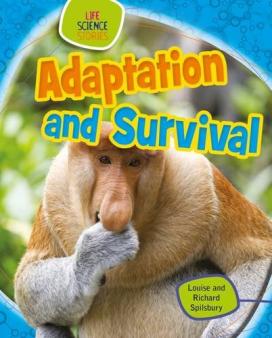
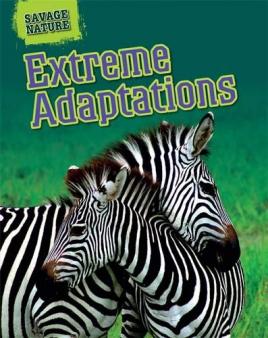

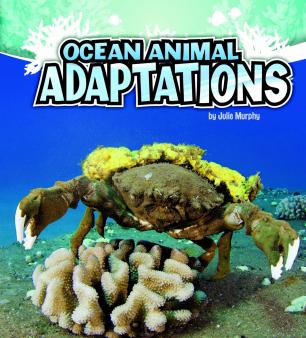
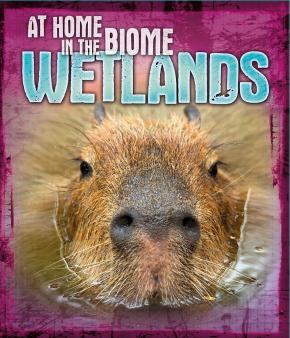
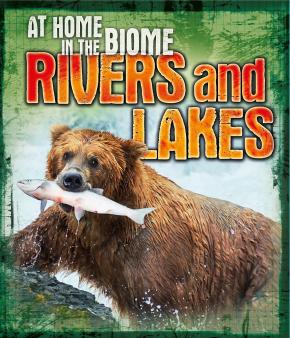
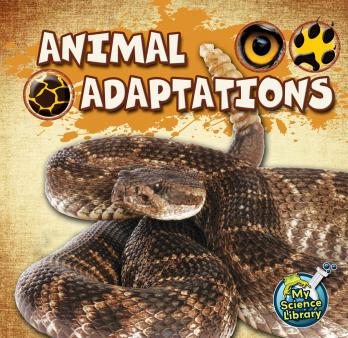
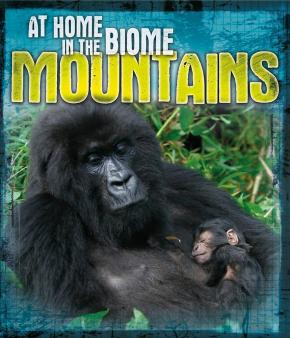
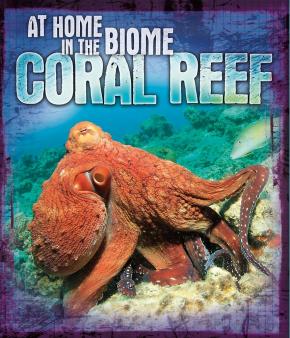
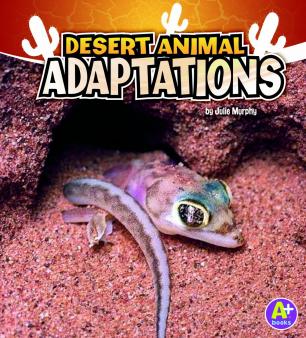
Find out more
- A BBC Bitesize animation to explicate evolution for KS2 children
- Download a fantastic fauna accommodation information pack from the Wildwood Trust
- Read about five astonishing animal adaptations in the Galapagos Islands
- Videos and lots of information about fauna and plant adaptations
- Development explained for children
- See how animals in the Chill take adapted.
- Watch a cartoon almost how the brown bear evolved into the polar conduct
- Find out how a befouled owl adapted to be a successful predator
- Curt video clips about animal adaptations in desert habitats and kangaroo adaptation
- Understand more about Antarctic animal adaptations
- Watch videos nearly fauna adaptations and the surround and natural option
- Information about biogeography
See for yourself
Observe out how how fauna camouflage works
Come across examples of animal camouflage in the rainforest
Seven examples of animal symbiosis
Also run across
Source: https://www.theschoolrun.com/homework-help/animal-adaptation
Posted by: schmidttheran.blogspot.com

0 Response to "How Do Animals Adapt To Not Being Able To See"
Post a Comment